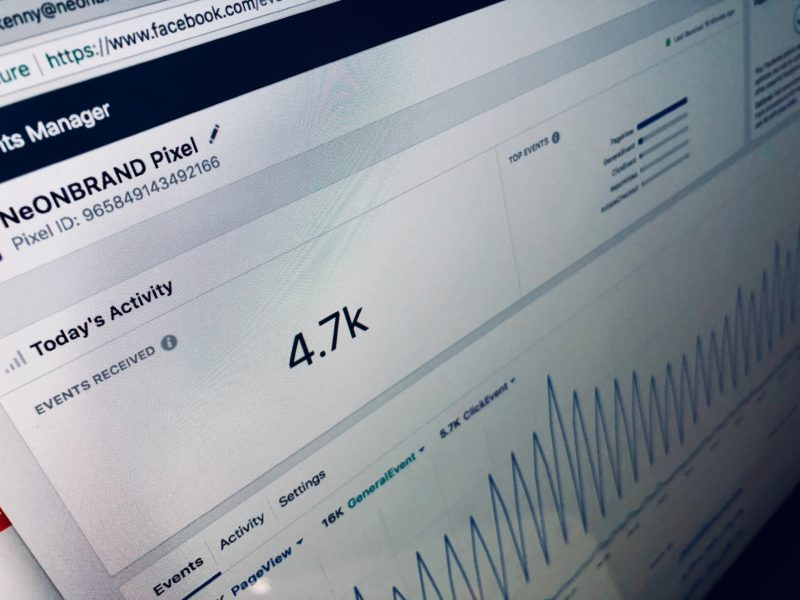This past spring, marketers were propelled into unprecedented territory when Apple announced their new privacy modifications that came with the launch of their iOS 14.5 update.
The update now requires iPhone users to provide explicit permission for apps like Facebook and Instagram to collect and share data—specifically, a user’s Identifier for Advertisers (IDFA), which is assigned randomly to each iOS user. The IDFA is how advertisers are able to deliver personalized ads, track users’ digital behaviors, and assign attribution (assigning value to those digital behaviors).
To understand the scope of the impact, keep in mind that over 1 billion consumers worldwide use Apple iPhones. A weekly updated report from Flurry reports that as of August 17, only 21% of daily iPhone users worldwide have opted into tracking—that means that over 790 million consumers are not being tracked.
For many marketers, the changes associated with iOS 14.5 may not be a surprise, but if they are, there’s more information below and steps to follow in order to get your ads back up to speed.
iOS 14.5 Impact

While all iPhone apps that track user data were impacted by the launch of iOS 14.5, Facebook and Instagram took some of the hardest hits, permanently altering how agencies and businesses advertise on these widely popular platforms.
Let’s break down the extent of this impact by the numbers. According to a report by Business of Apps, Facebook had 2.8 billion active users at the end of 2020. iOS users made up 14.7% of that population, which means that approximately 411.6 million people were impacted by the iOS update worldwide. So, unless your strategy has been to restrictively target your ads to Android users, expect some changes to your analytics.
iOS 14.5 Workaround
While arguably vague and complex, the platforms did what they could to prepare Facebook Business Manager users for the changes associated with iOS 14.5, particularly with conversion events that track user data. As you can probably deduce, the fate of conversion events was up in the air once iOS 14.5 was announced—and frankly, the full extent of the update’s impact on conversion events is still yet to be seen.
As explained on Facebook’s Business Help Center, Facebook will be using Aggregated Event Measurement, a protocol created by Facebook to process pixel conversion events from iOS 14 and up. While this all sounds promising, Aggregated Event Measurement only allows for 8 conversion events per website domain.
Additionally, to advertise on Facebook and Instagram after 14.5, businesses need to verify their website’s domain. While particularly important for businesses who use a Facebook pixel, all businesses who advertise on Facebook and Instagram should verify their domain to ensure that campaigns associated with their domain URL are not interrupted.
To learn more about Aggregated Event Measurement, and how to correctly optimize your business manager, click here.
iOS 14.5 Unknown Impacts
Marketers who actively report on Facebook and Instagram analytics have probably noticed a few changes to their ads, such as landing page views not aligned with link clicks and shorter attribution windows associated with their conversion events. Retargeting audiences have become smaller and organic Facebook page impressions are no longer viewable under the new Facebook Analytics format, just paid impressions. Leads are now underreported—make sure to cross-check conversions in Facebook and Instagram with Google Analytics—and campaigns that use CBO (campaign budget optimization) are disproportionately distributing funds. Unfortunately, the true extent of the impact of iOS 14.5 for advertisers is still being determined. Facebook and Instagram are still refining their platforms, so changes that aren’t connected to iOS 14.5 can also be expected in the coming months/year—changes that will presumably also impact how we understand advertising on these platforms (i.e., saying goodbye to Facebook Insights as we’ve known it all these years).
That being said, don’t worry just yet. Change in any form can be unnerving, but as professionals, our job is to analyze these changes and find solutions to present to our clients and peers. A few solutions to consider in light of iOS 14.5 include:
- Consider focusing success metrics on link clicks versus landing page views
- Rely on data through Google Analytics versus data through Facebook
- Track leads through Facebook forms versus website form conversions
- Retarget with custom audiences based on emails, phone numbers and through engagement-based retargeting
- Reconsider how much of your ad spend is going towards Facebook and Instagram versus other social marketing avenues such as LinkedIn or YouTube
Apple’s Mail Privacy Changes Are Coming

Now, a new change is approaching: iOS 15. While iOS 14.5 focused on privacy regarding apps, iOS 15 dives deeper into privacy concerns related to a form of communication we all use—email.
This fall’s iOS 15 update will provide additional challenges to marketers—specifically tracking email marketing on Apple’s Mail app. The simplified version of what’s going on? There will effectively be no more tracking user data in Apple Mail. For marketers, this may pose significant challenges, especially since 52% of email users access their email through Apple Mail.
Once a user opts into having their data hidden from marketing emails, important info like when they open an email, what device they used, and any additional online activity associated with that device will no longer be available.
Additionally, all emails will now be downloaded even before a user opens their email. This will inflate open rates, as pixels will track any downloaded email as ‘opened’—even if the receiver hasn’t manually opened it.
Additional Changes to Note
- The click-to-open rate will no longer be reliable due to the inflation of open numbers in Apple Mail.
- Apple Mail clicks won’t be impacted by the update, but data past the click will probably be skewed.
- Segmenting emails by open rates? It may be time to reconsider your strategy also due to the inflation. Additionally, think of your A/B testing strategy. If your A/B tests operate based on subject lines, you’ll need to change some things since open rates are no longer able to be determined by subject lines. Tests based on content and link clicks within the email, though, will go unscathed.
- Automatic resends to Apple Mail users will no longer work since it’ll appear as though every user has opened the email—other automated emails should go unaffected, though, as long as they don’t operate by open dates/times.
Need a little help? Get in touch!
